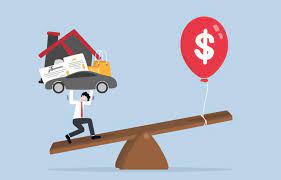More Than Just Numbers On A Chart
When people talk about cost of living, it often sounds like something only economists or news anchors really understand. But if you are trying to make rent, pay for groceries, or cover a doctor visit, you are living the cost of living every single day. It is not just about fancy charts comparing New York to Omaha. It is about how much it takes for you to live your life where you are. And for many people, high living costs often go hand in hand with debt. That is where tools like debt settlement can come into play. When high expenses push people into overwhelming debt, finding ways to reduce what they owe becomes part of surviving in an expensive world.
The Building Blocks Of Cost Of Living
At its core, cost of living is a simple idea. It is the total amount of money you need to cover your basic needs in a specific place at a specific time. Housing is usually the biggest piece. Then there is food, healthcare, transportation, taxes, utilities, and other essentials. Some places require more to cover these needs than others. For example, a one bedroom apartment in San Francisco might cost more than a four bedroom house in a smaller city. These differences explain why people who live in high cost areas usually need higher salaries just to stay afloat.
How Location Shapes Your Budget
Where you live does not just affect your rent or mortgage. It affects almost everything. Groceries may cost more because of shipping costs or local pricing trends. Gas might be pricier depending on state taxes. Childcare, property taxes, and even a haircut can cost double in one city compared to another. If you have ever wondered why two people with similar jobs can feel very different about their finances, it often comes back to cost of living. A teacher in a small town may feel financially comfortable, while a teacher in a big city might struggle even with a higher paycheck.
The Hidden Costs People Forget
Cost of living is not just about the obvious bills you pay each month. There are hidden expenses that can sneak up on you depending on where you live. Commuting costs are a big one. If you have to drive an hour each way because you cannot afford housing close to your job, that is extra money spent on gas, car maintenance, and time. Social expectations can also play a role. In some high cost areas, there can be pressure to spend more on dining out, entertainment, or even clothing just to fit in socially. These small pressures can quietly drain your budget without you realizing how much they add up over time.
When High Costs Lead To Debt
For many people, living in expensive areas means relying on credit cards, personal loans, or other forms of debt just to cover basic expenses. What starts as a temporary solution can turn into long term debt that feels impossible to escape. This is where Debt Settlement sometimes enters the conversation. Debt Settlement involves negotiating with creditors to reduce the total amount owed, allowing individuals to pay a lump sum that is less than the full debt. While not suitable for everyone, it can provide relief for people drowning under high living costs and mounting debt.
Cost Of Living And Career Choices
Cost of living can even shape the kinds of careers people pursue. Someone might choose a higher paying but more stressful job simply to afford life in a pricey city. Others might accept lower paying work in exchange for the lower costs and better quality of life found in smaller towns. In recent years, remote work has opened new doors, allowing some people to earn big city salaries while living in more affordable areas. This shift shows how much power cost of living has over not just personal budgets but life decisions.
It Changes Over Time
One tricky thing about cost of living is that it does not stay the same. Prices rise, neighborhoods change, new taxes are introduced, and wages may or may not keep up. Inflation is one factor that makes the cost of living feel like it is constantly climbing. What was affordable five years ago might feel out of reach today. This is why regular check ins on your budget are so important. As your expenses change, your financial plan needs to change too.
Comparing Cities Isn’t Always Straightforward
People love to compare cities based on cost of living, but it is not always a clear cut decision. Sure, the rent might be cheaper in one place, but what about job opportunities? What about schools, safety, and healthcare access? Sometimes paying a little more means better services, shorter commutes, or being closer to family. The numbers only tell part of the story. Quality of life is just as important as cost.
Small Adjustments Can Make A Big Difference
Even if you live in a high cost area, there are ways to manage your expenses better. Meal planning, using public transportation, finding affordable housing options, or even sharing expenses with roommates can help stretch your paycheck further. Financial tools like automatic savings, refinancing loans, or seeking professional advice for debt management can also make a difference. The key is to be proactive and flexible.
Why Understanding Cost Of Living Matters
At the end of the day, understanding cost of living is not about chasing the cheapest place to live. It is about knowing how your income matches your expenses, how your choices impact your financial stability, and how to plan for both the expected and unexpected costs of life. Being aware of your cost of living helps you make smarter decisions about where to live, what job to take, and how to build a future that works for you.
Cost of living is not just an abstract idea for economists to debate. It is something real that touches every part of your life. The better you understand it, the more control you have over your money and your future.




